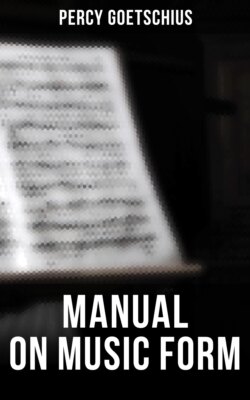Читать книгу Manual on Music Form - Percy Goetschius - Страница 7
На сайте Литреса книга снята с продажи.
[Illustration: Duple and Triple Rhythm]
ОглавлениеTable of Contents
This distinction is so significant and so striking, that the music lover who is eager to gain the first clues to the structural purpose of a composition, should endeavor to recognize which one of these two rhythmic species underlies the movement to which he is listening. It is fairly certain to be one or the other continuously. Of duple measure, the march and polka are familiar examples; of triple measure, the waltz and mazurka. The "regularity" of the former rhythm imparts a certain stability and squareness to the entire piece, while triple rhythm is more graceful and circular in effect.
(2) The same dynamic distinction applies also to whole measures, and
(3) to accents. The first of two successive measures, or of two or more accents, is always a trifle heavier than the other.
(4) The melodic contents of the first measure may be exactly reproduced in the succeeding measure; but if this is the case, they are very unlikely to appear still again in the next (third) measure, for that would exaggerate the condition of Unity and create the effect of monotony.
